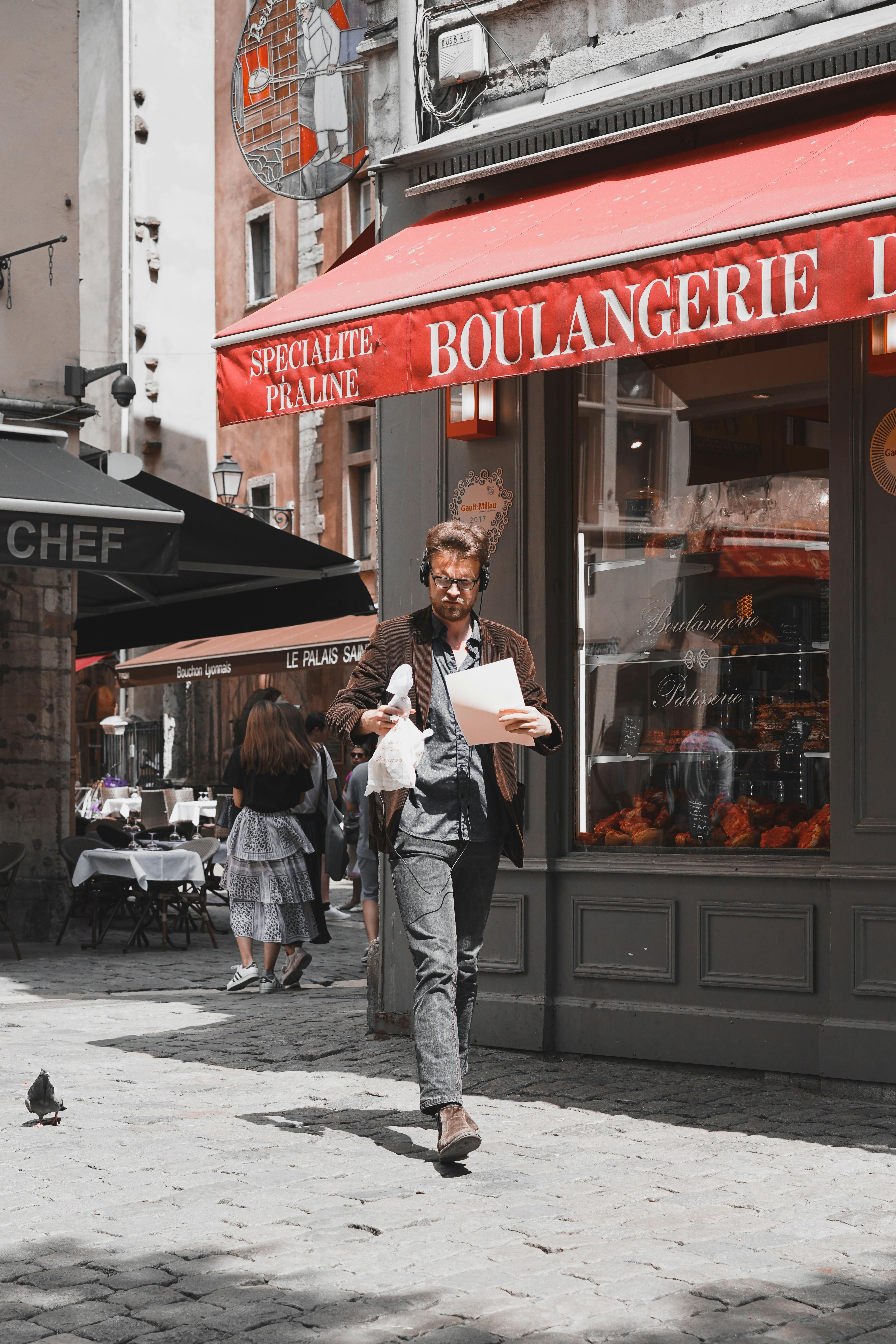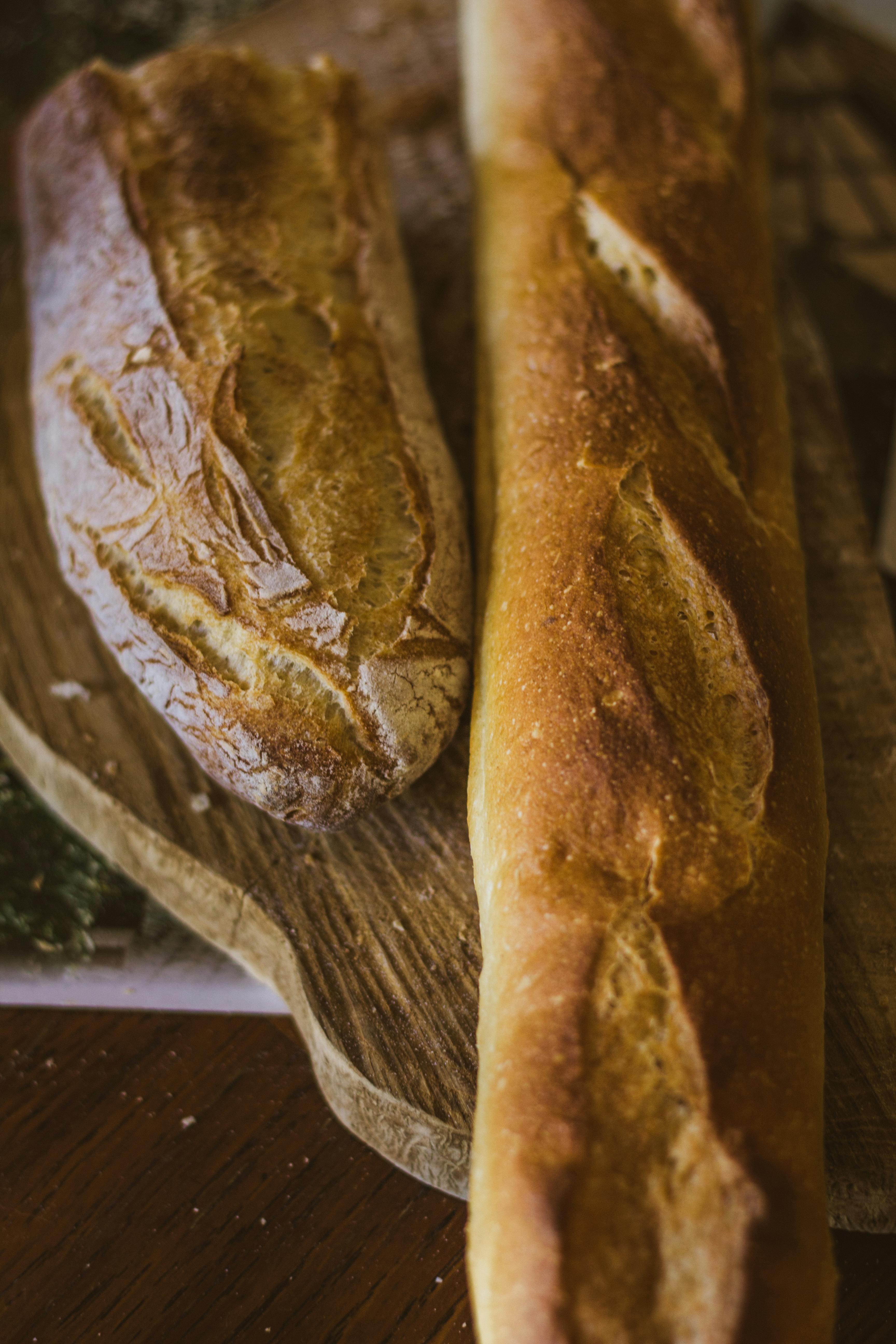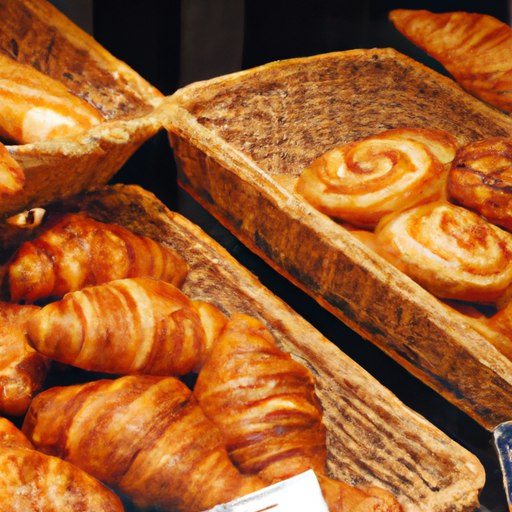Step into the enchanting world of French boulangeries, where heavenly aromas fill the air and tantalizing treats await your eager taste buds. In this delightful article, we invite you on a culinary journey that celebrates the wonders of bread, pastries, and the iconic baguettes found within these charming establishments. Discover the secrets behind the art of French baking, the traditions that have been passed down through generations, and the sheer joy that comes from indulging in the exquisite creations of these esteemed boulangeries. Get ready to be captivated by the allure of French cuisine and embark on a mouth-watering adventure that will leave you craving for more.

The History of French Boulangeries
The Origins of Boulangeries
French boulangeries have a long and storied history that dates back centuries. The tradition of baking bread in France can be traced back to ancient times when grains were first cultivated. Bread has always been a staple of the French diet, and over time, dedicated bakers emerged to meet the growing demand for fresh and delicious loaves.
The Evolution of Boulangeries
As French society progressed, so did the boulangeries. In the Middle Ages, communal ovens were common, and villagers would bring their dough to be baked, forming an important social gathering point. The 17th and 18th centuries saw the rise of individual bakeries, where bakers would specialize in creating a variety of bread and pastries. These early boulangeries laid the foundation for the thriving industry that exists today.
Boulangeries Today
In the modern era, boulangeries continue to play a vital role in French culture. They are found in every neighborhood, and the aroma of freshly baked bread wafts through the streets, enticing locals and tourists alike. Boulangeries not only provide delicious bread and pastries but also serve as community gathering places where people can catch up with friends and neighbors while enjoying a cup of coffee and a croissant.
French Bread: A Staple of Boulangeries
Traditional French Bread
French bread, known for its distinctive crust and chewy interior, is the hallmark of a boulangerie. The most iconic type of bread is the baguette, but there are many other traditional varieties as well. Pain de campagne, a rustic country bread, and pain de mie, a soft sandwich loaf, are just a few examples of the delicious options found in boulangeries.
Popular Varieties of French Bread
In addition to the classics, boulangeries also offer a wide range of specialty breads. Brioche, a rich and buttery bread often enjoyed at breakfast, is a perennial favorite. Fougasse, a flatbread with various fillings such as cheese or olives, is another popular choice. From walnut bread to olive bread, there is a flavor and texture to suit every palate.
Artisanal Breadmaking Techniques
What sets French bread apart is the artisanal techniques used in its preparation. Bakers take pride in using high-quality ingredients and following traditional methods that have been passed down through generations. The long fermentation process and hand shaping contribute to the unique flavor and texture of French bread. Every loaf is a work of art.
The Artistry of French Pastries
Classic French Pastries
While bread is the backbone of a boulangerie, French pastries hold a special place in the hearts of pastry enthusiasts around the world. Classic pastries like croissants, pain au chocolat, and éclairs are just a few examples of the exquisite treats found in boulangeries. These delicate delights are made with precision and skill, resulting in flaky, buttery layers that melt in your mouth.
Innovative Pastry Creations
While honoring tradition is important, boulangeries are also known for their innovative pastry creations. Talented pastry chefs push the boundaries of flavor and presentation, creating desserts that are both visually stunning and delicious. From macarons with unique flavor combinations to modern twists on classic tarts, boulangeries are at the forefront of pastry innovation.
Key Ingredients in French Pastries
French pastries rely on quality ingredients to achieve their exceptional taste. Butter, a cornerstone of French baking, lends richness and flavor to pastries. Almonds, chocolate, and seasonal fruits are also common ingredients in traditional and modern pastries. The combination of these carefully selected elements ensures that a trip to a boulangerie will always be a delightful culinary experience.

The Iconic Baguette
The Baguette: A Cultural Symbol
No discussion of French boulangeries would be complete without mentioning the iconic baguette. This long and slender loaf is instantly recognizable and has become a symbol of French culture worldwide. The baguette’s unique shape and crispy crust make it not only visually appealing but also the perfect accompaniment to any meal.
Baguette vs. Traditional Bread
While the baguette holds a special place in the hearts of many, traditional French bread should not be overlooked. The baguette is celebrated for its crust and airy interior, whereas other varieties of French bread, such as the pain de campagne or the pain de mie, offer different textures and flavors. Each type of bread has its place in French cuisine, and boulangeries are the perfect places to explore the full range of options.
Enjoying Baguettes
One of the joys of indulging in a baguette from a boulangerie is the simple pleasure of tearing off a piece and savoring it on the spot. The crust gives a satisfying crunch, and the soft, chewy interior releases a burst of flavor when bitten into. Whether enjoyed plain, accompanied by cheese and charcuterie, or used as the base for a sandwich, the baguette remains an enduring symbol of French culinary tradition.
Secrets of the Best Boulangeries in France
The Importance of Quality Ingredients
To create exceptional bread and pastries, boulangeries prioritize the use of high-quality ingredients. From flour to butter and eggs, every component is carefully sourced to ensure the best possible taste and texture. Bakers understand that the quality of their ingredients directly impacts the final product, and they spare no expense in selecting the finest ingredients.
Meticulous Baking Techniques
The best boulangeries in France are known for their meticulous baking techniques. Bakers dedicate hours to kneading, shaping, and proofing the dough to achieve the perfect texture and crust. Temperature and timing are carefully monitored throughout the baking process to ensure that each loaf or pastry is cooked to perfection. These precise techniques contribute to the consistently exceptional quality found in the best boulangeries.
Famous Boulangeries to Visit
For those seeking the ultimate boulangerie experience, several establishments have gained acclaim for their outstanding bread and pastries. From the historic Poilâne bakery in Paris, famous for its signature sourdough bread, to the innovative creations of Dominique Ansel, inventor of the cronut, these boulangeries offer a glimpse into the world of French baking at its finest. Visiting these renowned establishments is a must for any bread and pastry lover.
Boulangeries and French Culture
Community Gathering Places
In France, boulangeries serve as communal meeting points where neighbors and friends come together. People can often be found chatting while waiting in line, discussing local events or sharing stories of their day. The atmosphere is warm and convivial, fostering a sense of belonging and connectedness within the community.
Boulangeries as Cultural Icons
Boulangeries are not just places to buy bread and pastries; they are integral parts of the French cultural landscape. Their presence in every neighborhood is a testament to the importance of bread in French cuisine and daily life. The sights and smells of a busy boulangerie are deeply ingrained in the French collective memory, evoking a sense of nostalgia and tradition.
Bread and Pastry Traditions in France
French boulangeries are steeped in tradition and uphold the rich heritage of bread and pastry making in France. Passed down through generations, traditional recipes and techniques have been preserved and refined. From the art of baguette shaping to the complex process of crafting delicate pastries, these traditions ensure that the flavors and textures of French baking endure for future generations to enjoy.
Inside a French Boulangerie
Layout and Display
When you step inside a French boulangerie, you’ll likely be greeted by a display case filled with tantalizing pastries and loaves of bread. The layout is designed to showcase the artistry and variety of the baked goods on offer. The arrangement of breads and pastries is often a visual feast, with carefully arranged shapes and colors that entice customers to explore further.
The Baking Process
Behind the scenes, the bakers in a French boulangerie are hard at work, often starting their day in the early hours of the morning. The entire baking process, from mixing the dough to the final proofing and baking, is meticulously carried out to ensure the highest quality. Each step requires skill and precision, as bakers strive to create consistent and delicious products.
Customer Experience
Visiting a French boulangerie is more than just a transaction; it is an experience. The welcoming atmosphere and attentive service add to the overall enjoyment of the visit. Bakers and staff take pride in their craft and are often happy to answer questions about the products or offer recommendations. The goal is to make every customer feel valued and leave with a smile on their face.
Boulangeries Beyond France: Spreading the Tradition
French Boulangeries Around the World
The love for French bread and pastries has spread far beyond France’s borders. In cities around the world, you will find boulangeries that strive to recreate the authentic flavors and techniques of their French counterparts. From Tokyo to New York, these establishments offer a taste of France’s culinary heritage to locals and tourists alike.
Adapting to Local Tastes
While French boulangeries maintain their traditional roots, they also adapt to the local tastes and preferences of their international customer base. This may involve incorporating local ingredients or creating pastries inspired by regional flavors. Through these adaptations, boulangeries successfully bridge cultural boundaries while still honoring the essence of French baking.
Preservation of French Baking Traditions
Even as French baking traditions are exported and adapted around the world, boulangeries in France remain steadfast in preserving their heritage. The continued success and popularity of traditional French bread and pastries serve as a testament to the enduring appeal of these time-honored recipes and techniques. By staying true to their roots, French bakers ensure that the essence of French baking remains intact.
Eating Like a Local: Boulangerie Etiquette
Ordering and Paying
When visiting a boulangerie, it is customary to approach the counter and indicate your selections to the staff. Most boulangeries have a ticket system, where you take a numbered ticket upon entering and wait for your turn to be served. Once you have made your choices, it is customary to thank the staff and pay for your items before leaving.
Bakery Etiquette Customs
In France, it is polite to greet the staff with a friendly “Bonjour” when entering the boulangerie. This simple greeting sets a friendly tone and is considered good manners. Additionally, it is customary to say “Merci, au revoir” as you leave, expressing your gratitude for their service. Observing these customs shows respect for the staff and the cultural norms of the boulangerie.
Enjoying Bread with Meals
In France, bread is an integral part of every meal. It is customary to place a piece of bread on the tablecloth or your plate to accompany your meal. Rather than using a knife, tearing the bread by hand is the preferred method. This not only adds to the convivial atmosphere of a meal but also allows you to fully appreciate the texture and flavor of the bread.
Tips for Finding the Best Boulangeries
Researching Local Recommendations
To find the best boulangeries in a particular area, it is helpful to do some research beforehand. Consult online reviews, local food blogs, or ask for recommendations from locals. These resources can provide valuable insights into the quality and reputation of different boulangeries, ensuring that you have the best possible experience.
Observing Visual Clues
When searching for a top-notch boulangerie, visual cues can often give you a good indication of the quality of the baked goods. Look for a boulangerie with a steady stream of customers, as this suggests that the bread and pastries are in high demand and therefore likely delicious. Additionally, pay attention to the appearance of the baked goods on display to get a sense of their freshness and quality.
Exploring Off the Beaten Path
While it’s tempting to head to the most famous boulangeries in a given area, don’t be afraid to venture off the beaten path. Sometimes the best boulangeries are hidden gems tucked away in lesser-known neighborhoods. By exploring the less touristy areas, you may discover boulangeries that offer unique specialties and unparalleled craftsmanship.
In conclusion, French boulangeries are a treasured part of French culture and culinary heritage. From their rich history to the artistry and skill showcased in their bread and pastries, boulangeries offer a glimpse into the essence of French baking. Whether you find yourself in France or at a French-inspired bakery abroad, a visit to a boulangerie is an opportunity to indulge in the sensory delights that have captivated people for generations. So, next time you have the chance, step inside a boulangerie, savor the aromas, and treat yourself to the delectable offerings that await.

